Abstract
Laboratory experiments to determine the duration of the immature stages of Culex pipiens fatigans were carried out because such information is important from the point of view of control by larvicides. At a temperature of 25.1°C±0.7°C the mean incubation period is 27.11±0.57 hours. Females spend a longer time in the pupal stage than males (34.16±0.74 hours and 32.95±0.75 hours, respectively, at 28.6°C±0.8°C; there is no 24-hour pupating or emerging rhythm. The duration of larval life is longer for the female (135.3±4.4 hours) than for the male (118.4±2.4 hours). Larvae that take a long time to pupate also take a long time to emerge. Withholding of food for a few hours from first-stage larvae increases the duration of larval life but does not affect that of pupal life. These observations on the differences between the sexes in the duration of larval and pupal life are in agreement with observations made on Aedes aegypti in Uganda.
Full text
PDF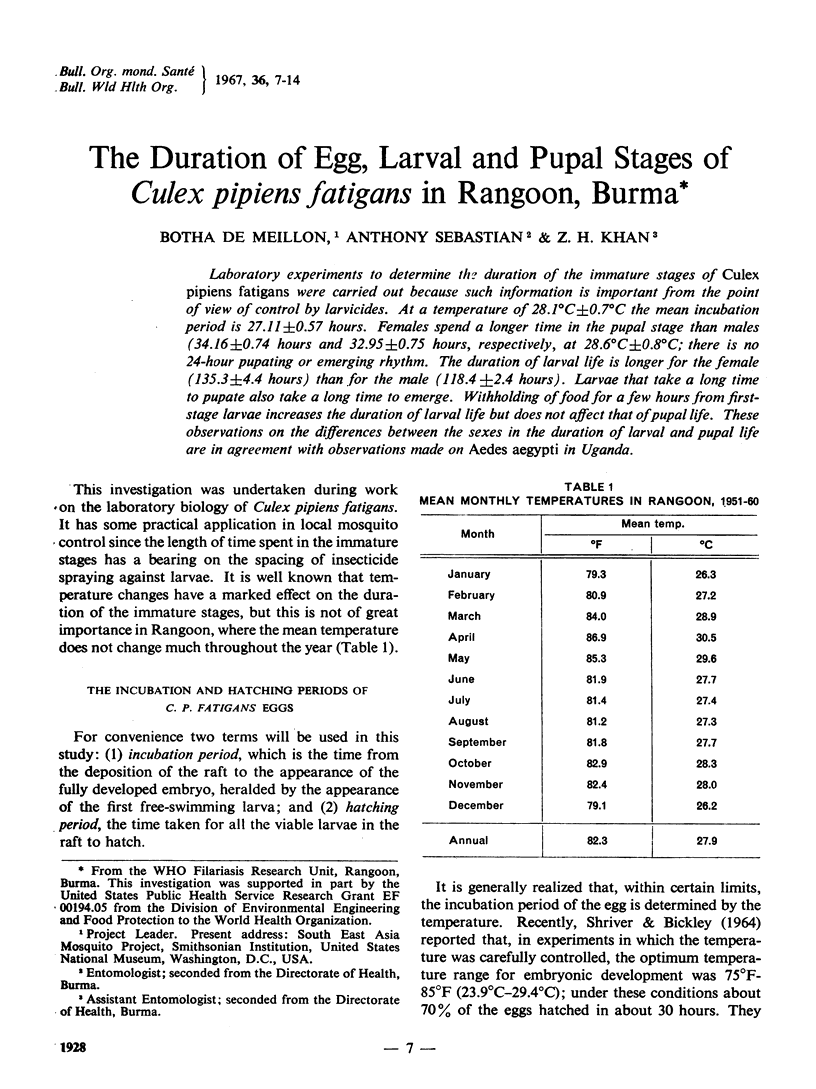
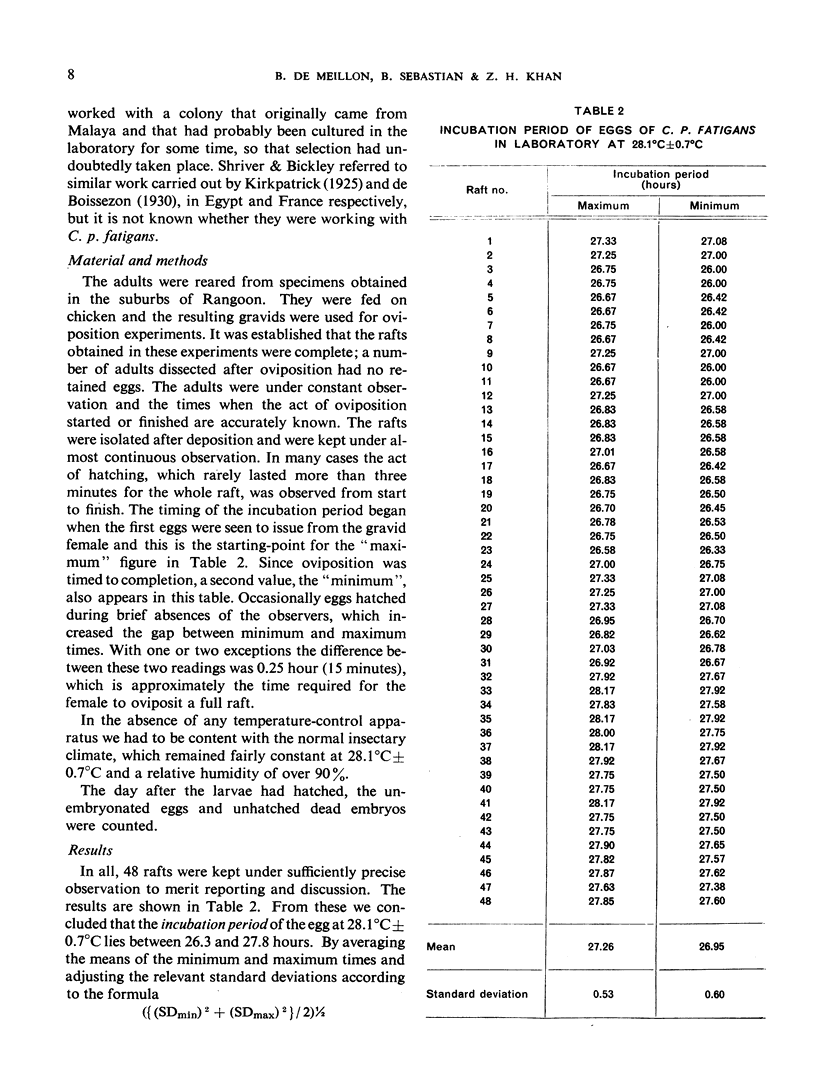
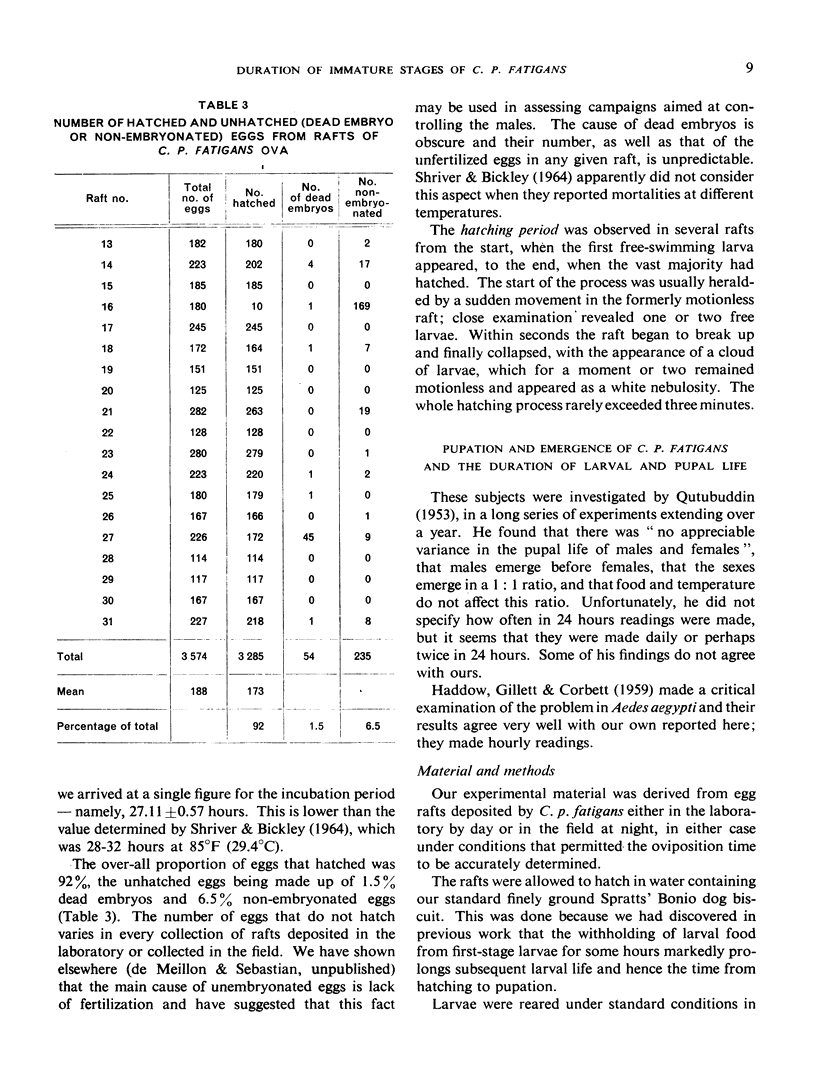
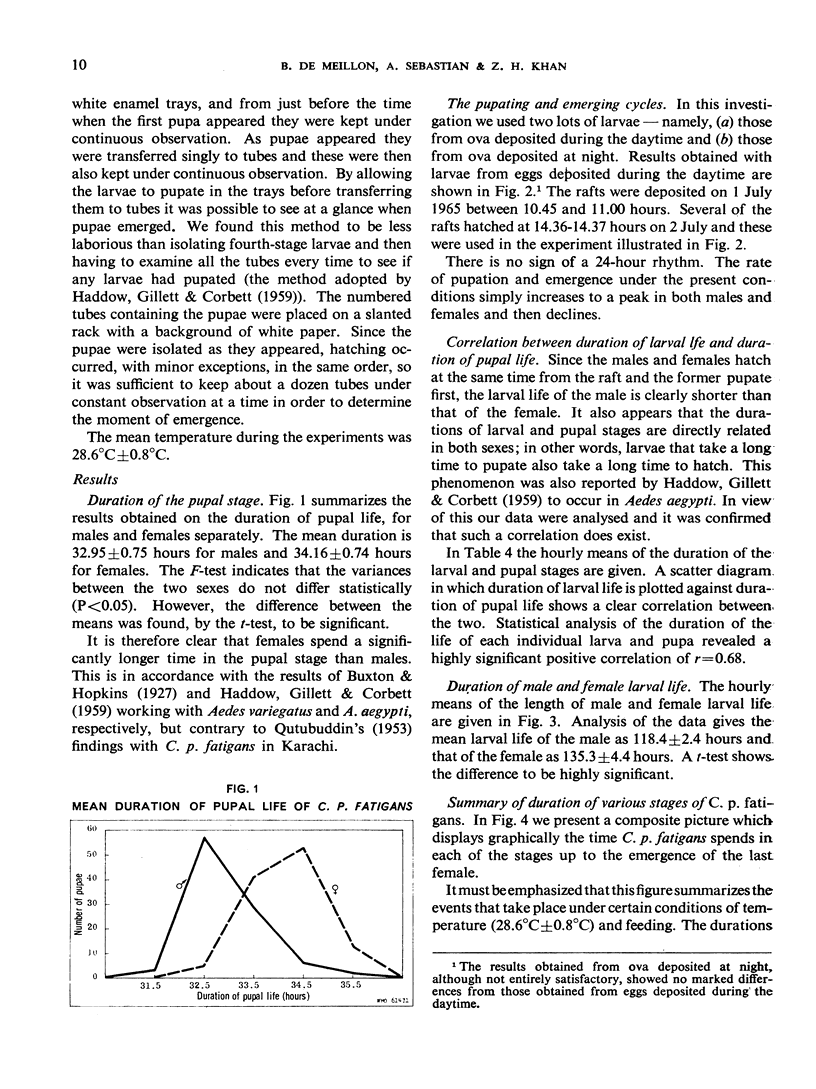
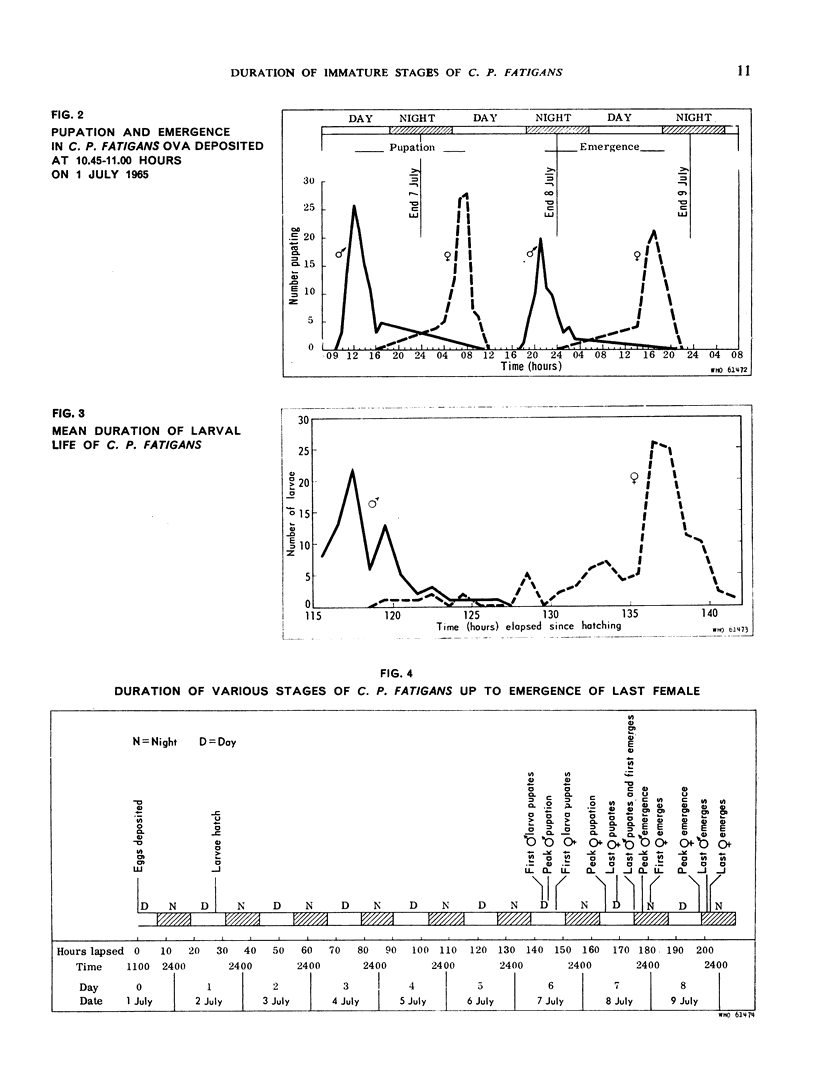
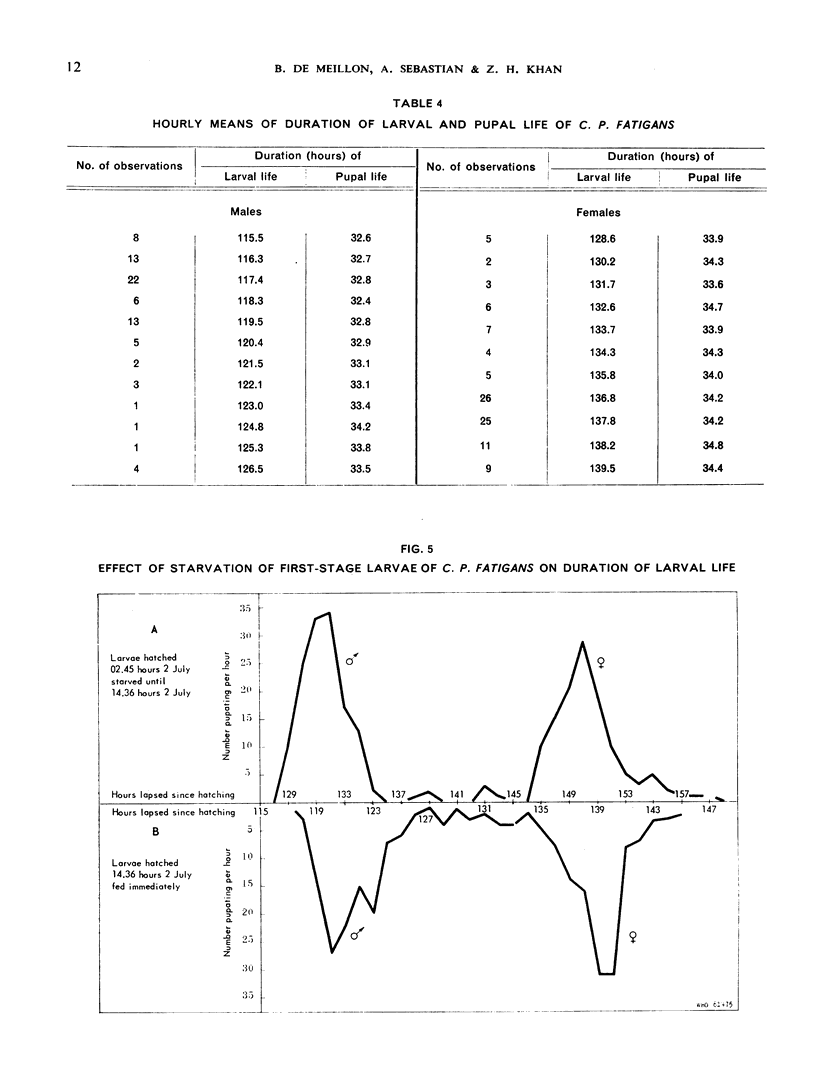
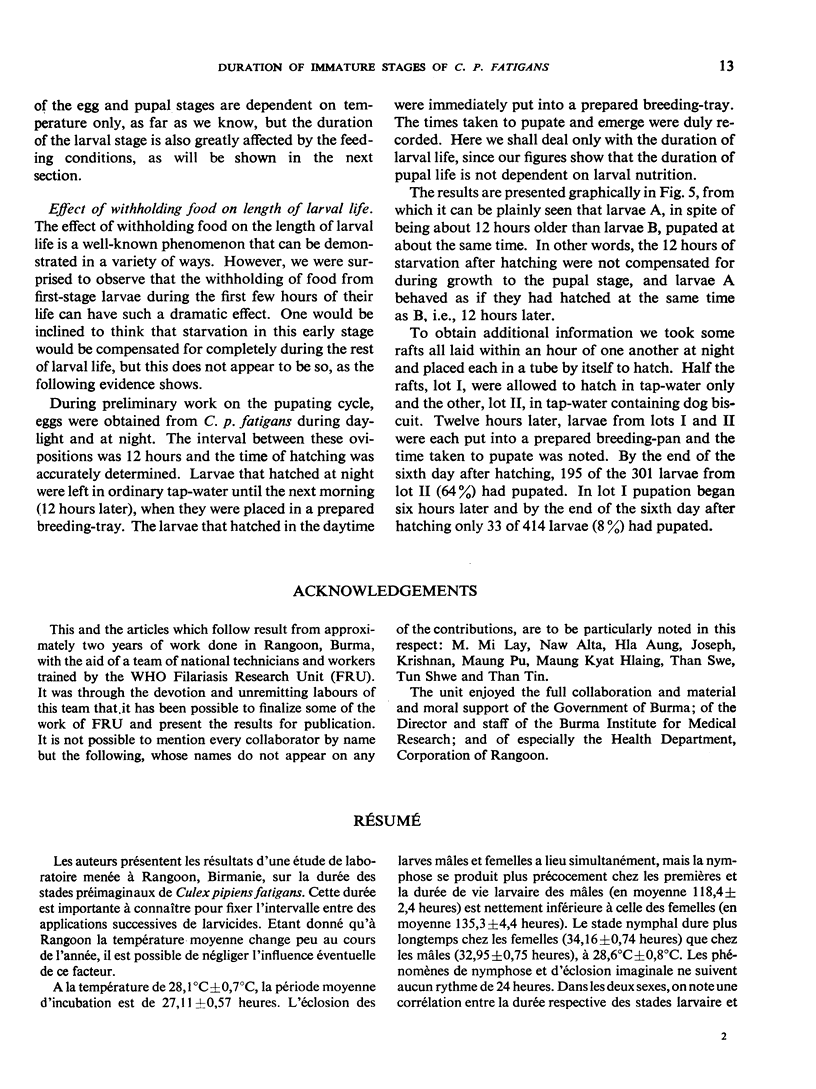
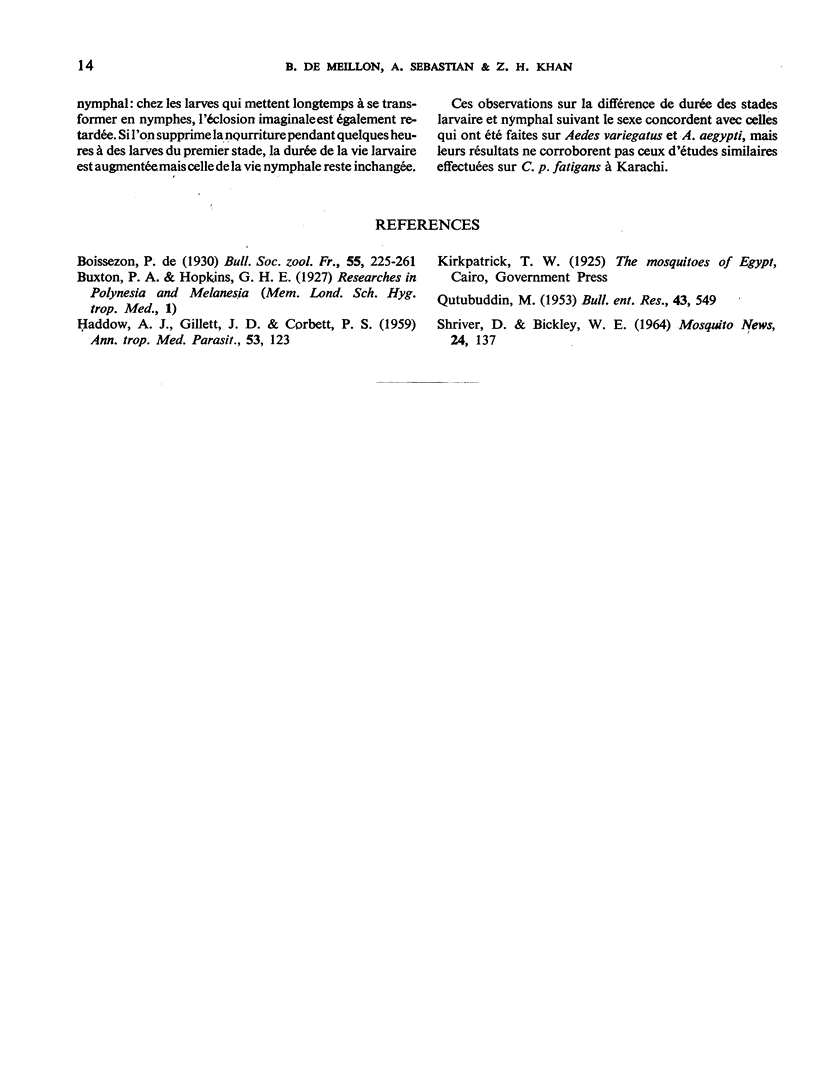
Selected References
These references are in PubMed. This may not be the complete list of references from this article.
- HADDOW A. J., GILLETT J. D., CORBET P. S. Laboratory observations on pupation and emergence in the mosquito Aedes (Stegomyia) aegypti (Linnaeus). Ann Trop Med Parasitol. 1959 Jun;53:123–131. doi: 10.1080/00034983.1959.11685909. [DOI] [PubMed] [Google Scholar]


